There are many martial arts in the world, for Mao to learn audio and video development?
Men are afraid of getting into the wrong line, women are afraid of marrying the wrong man, and programmer skills depreciate quickly. Only by keeping up with the demand for talents in the industry can you continue to maintain and increase your value. Only programmers who continue to learn and update their own skills can survive the 35-year-old midlife crisis.
And audio and video development is such a new frontier.
Audio and video development, more money and less people, come quickly!

With the popularity of the short video industry and the popularization of domestic 5G, basically everyone is free to watch short videos. The number of domestic short video users has reached 873 million. The huge user demand has led to a shortage of audio and video development talents in the talent market, and the employment salary is also high. Nature rises.
The market demand for audio and video is actually very large, and it is increasing year by year. Live broadcast, on-demand, video conference, etc. are all projects that have risen over the years.
The audio and video practitioners are basically scary. The market I have learned is that several companies are poaching each other. The competition for talents is a stock fight. Now companies want audio and video talents basically to train internally, because newcomers are really admitted. Rarely, after all, the work of doing audio and video has all gone to the enthusiasm of machine learning and deep learning.
An excellent audio and video developer can easily achieve an annual salary of 300,000 to 500,000.

That's right, high thresholds will lead to high returns, or should someone offer high salaries for Mao to grab people? ? ?
Audio and video/high-definition big pictures/artificial intelligence/live/vibrato, etc. This year, the technologies that are most closely related to users and most related to our lives have been looking for the ultimate technology landing platform.
It used to be a windows system, but now it is a mobile system. The mobile system is based on the prerequisite that Android accounts for most of it, so Android NDK technology is already our essential skill. To learn NDK well, C/C++, jni, and Linux basics need to be learned. In addition, audio and video encoding and decoding technology, streaming media protocol, ffmpeg are all necessary skills for audio and video development, and OpenCV/OpenG/ these are necessary knowledge for image processing.
No, it's not that it's just a NDK technology, how come C/C++, jni, Linux are a big push.
Don't worry, audio and video development is like Shaolin Shao Kungfu's Yi Jin Jing. If you want to learn peerless martial arts, you must first master the basic skills of horse stance, Shaolin internal skills, and Shaozu Changquan.
Those who earn a lot are often difficult to learn! Daniel guides the way, avoid detours
No, I happened to have the privilege of picking up an audio and video development document from a friend of the ByteDance program. I asked him to not give it back at the beginning. I was afraid that others would learn. After Ruan Mo Hard Pao agreed to introduce him to Ruan Meng Mei. , Gave it to me reluctantly.
Dachang is Dachang. Even the information is so well-defined and organized into PDF files: if you need the full version, you can get it for free here.
If you need the full version, click here to get it for free.
The following are some chapters of this development document:
Phase 1: Android Multimedia
Chapter 1 Three Ways to Draw Pictures
Chapter 2 AudioRecord Recording PCM Audio
Chapter 3 AudioTrack plays PCM audio
Chapter 4 Camera Video Collection
Chapter 5 MediaExtractor MediaMuxer realizes the decapsulation and synthesis of video
Chapter 6 MediaCodec Hard Compilation Process and Practice
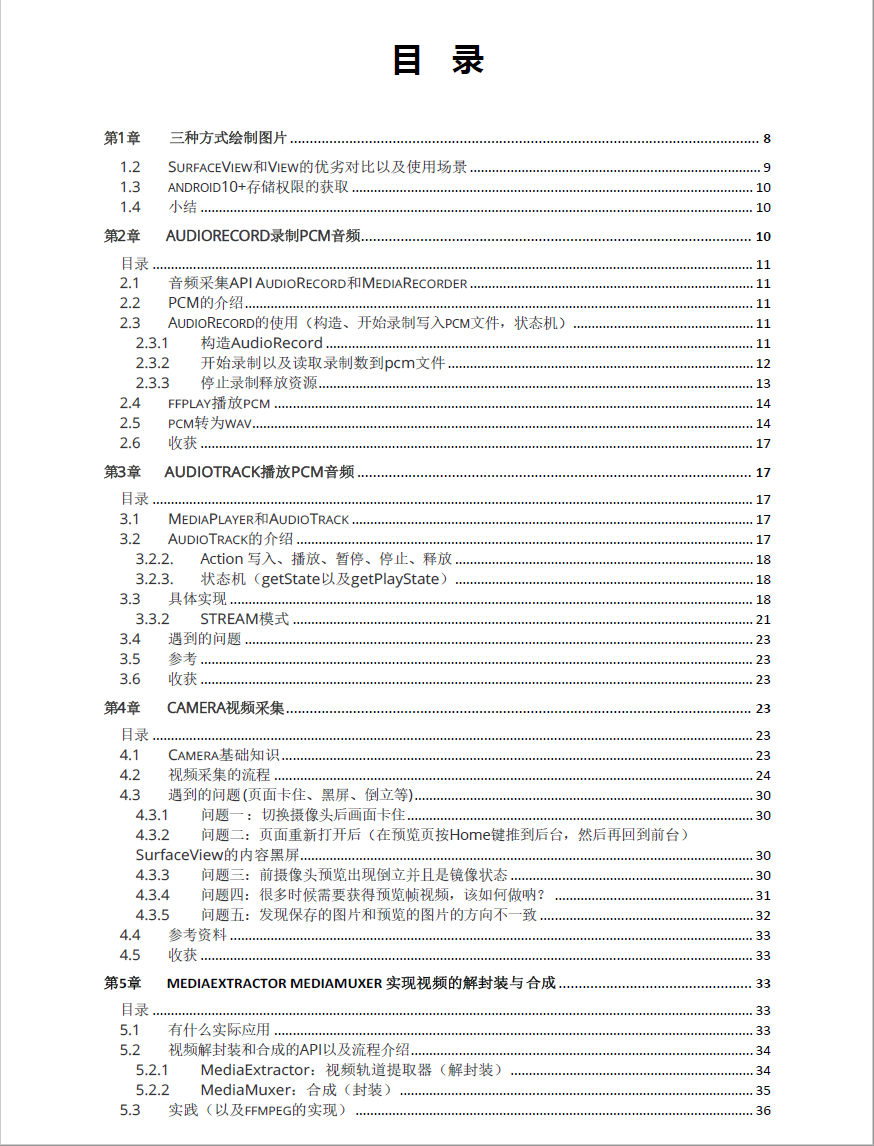
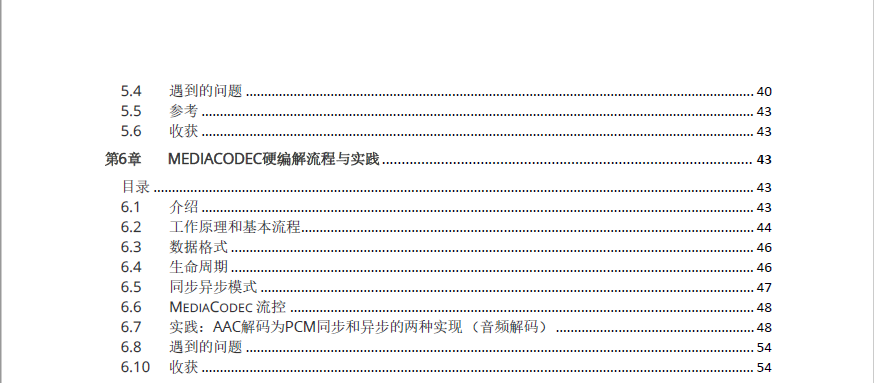
Phase 2: OpenGL ES
Chapter 7 Basic Concepts of OpenGL ES
Chapter 8 Rendering Process of GLSL and Shader
Chapter 9 OpenGL ES Drawing Flat Graphics
Chapter 10 GLSurfaceView source code analysis & EGL environment
Chapter 11 OpenGL ES Matrix Transformation and Coordinate System
Chapter 12 OpenGL ES Textures
Chapter 13 OpenGL ES Filters (Part 1)
Chapter 14 OpenGL ES Real-time Filter
Chapter 15 OpenGL ES Particle System-Fountain
Chapter 16 OpenGL ES Particle Effects-Firework Explosion
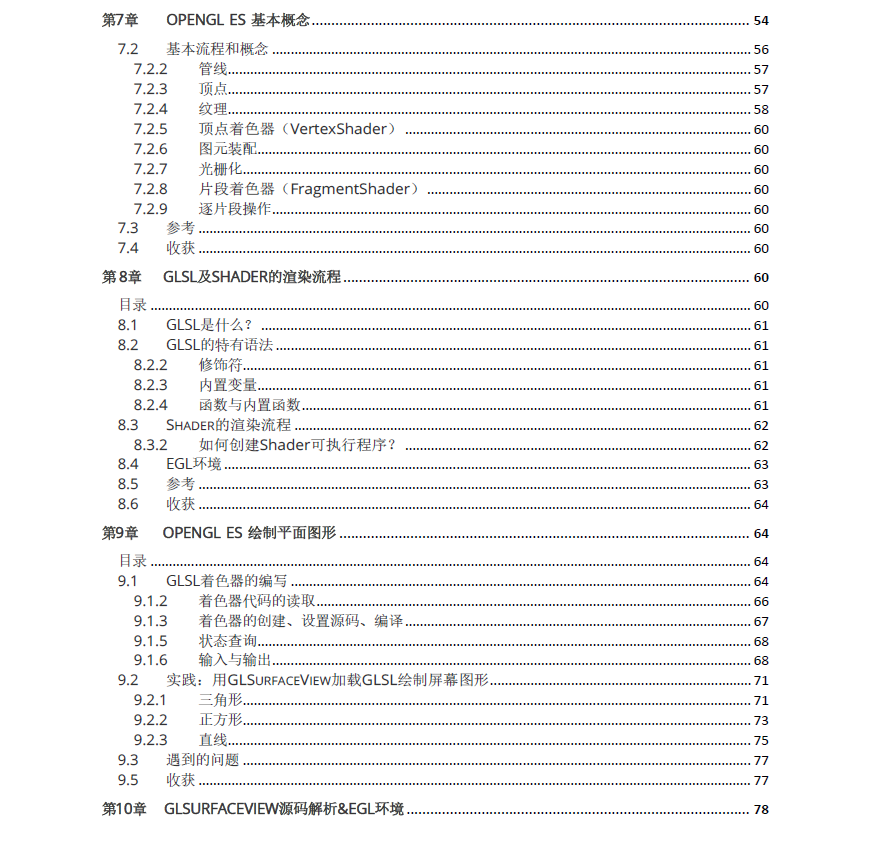
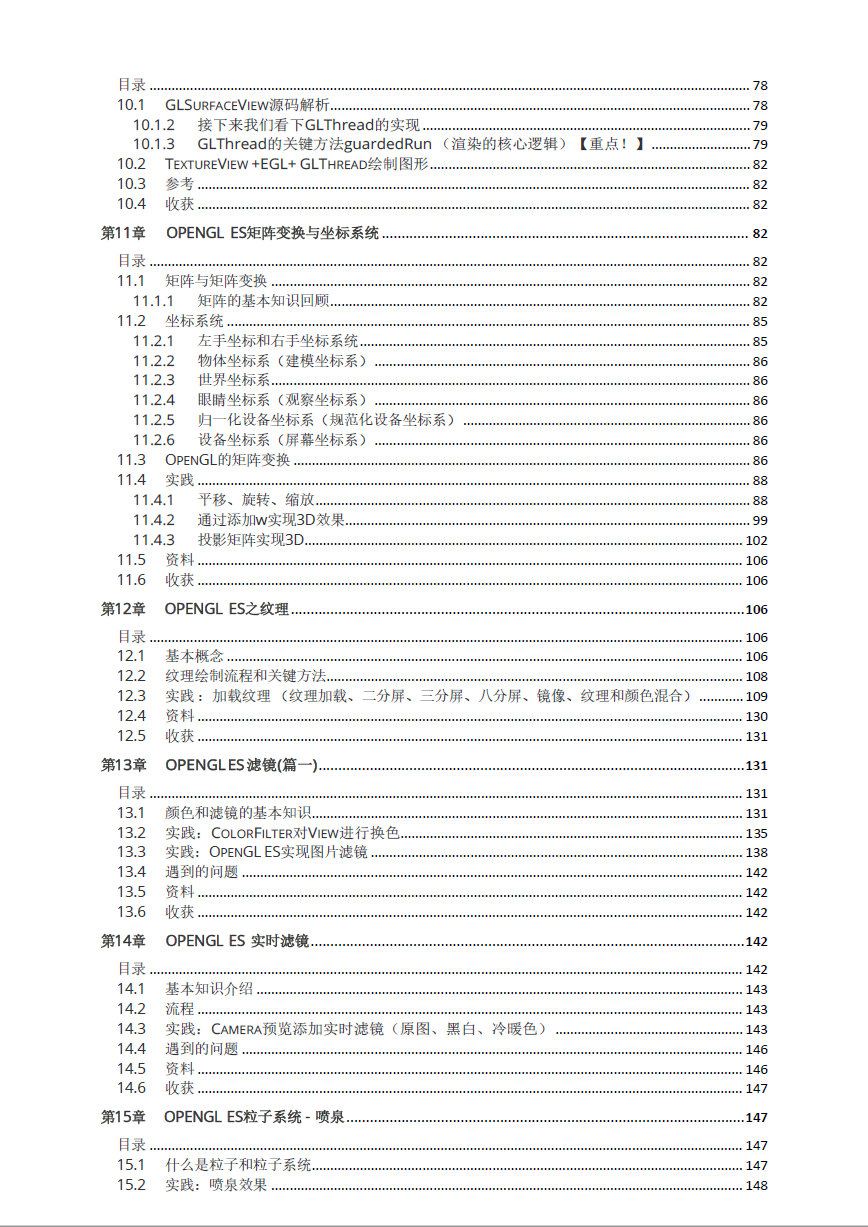
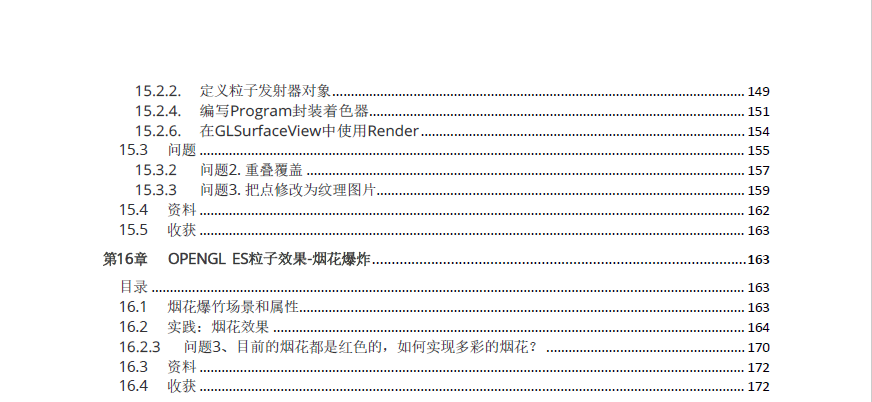
Phase three:: JNI&NDK
Chapter 17 Learning and Use of JNI and NDK
Chapter 18 JNI-Reference Types, Exception Handling, Function Registration
Chapter 19 NDK Construction Methods ndk-build and cmake
Chapter 20 Pointers, Memory Models, References
Chapter 21 Operator Overloading, Inheritance, Polymorphism, and Templates
Chapter 22 STL Container
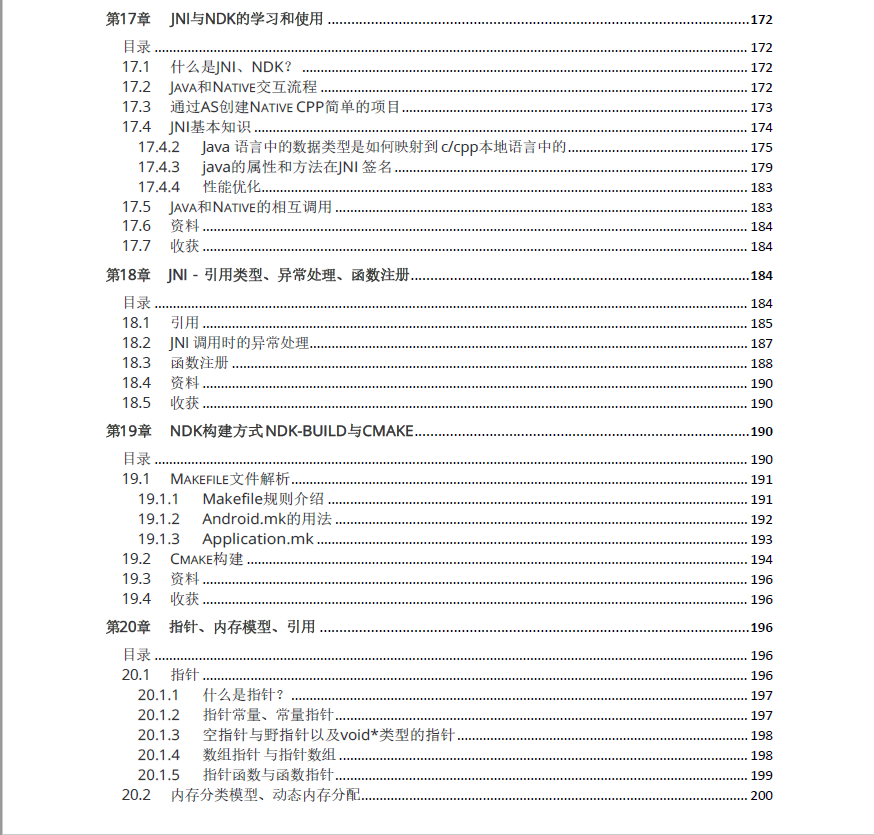
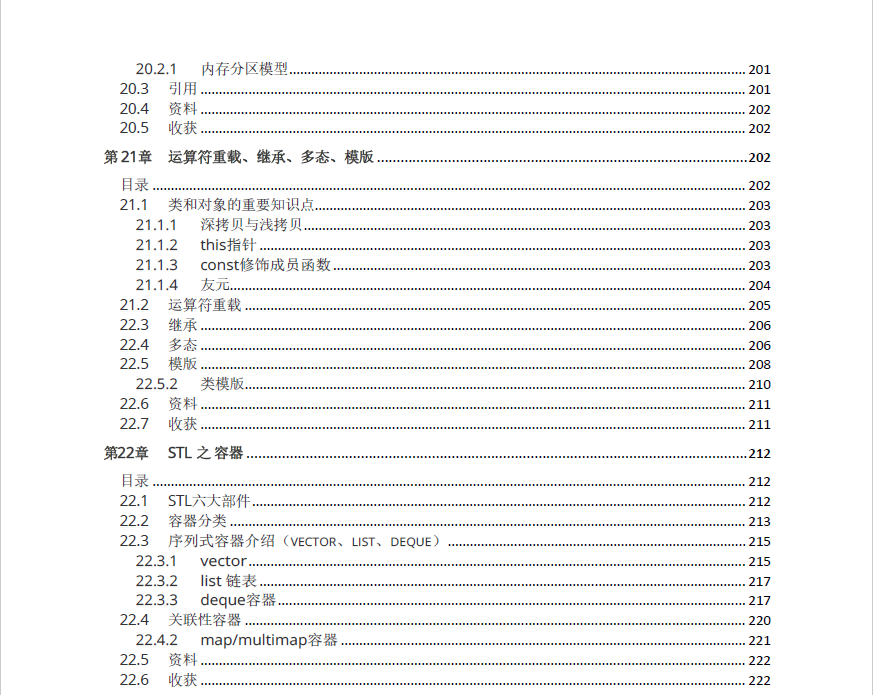
Sub-series algorithm
Chapter 23 Algorithm Series-Bubble Sort
Chapter 24 Algorithm Series-Quick Sort
Chapter 25 Algorithm Series-Heap Sort
Chapter 26 Series of Algorithms-Selection, Insertion Sort and the Implementation of Sort in STL
Chapter 27 Algorithm Sequence-Binary Search Tree
Chapter 28 Algorithm Sequence-Balanced Binary Tree
Chapter 29 Algorithm Sequence-Hash Table
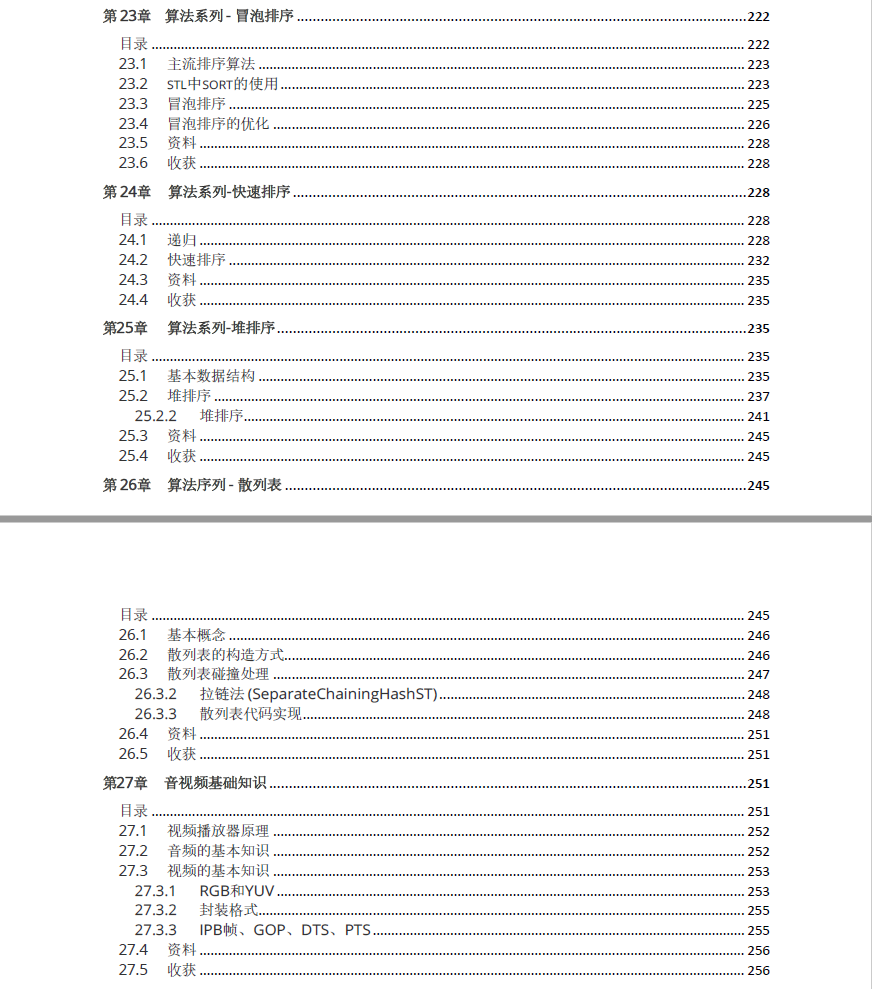
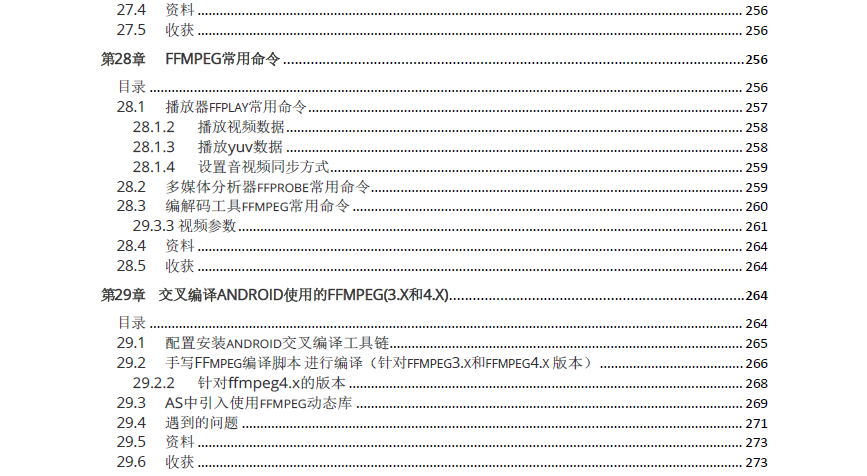
Stage 4: FFmpeg
Chapter 30 Basics of Audio and Video
Chapter 31 FFMPEG Common Commands
Chapter 32 FFMPEG + OPENSL ES to achieve audio decoding and playback
Chapter 33 FFMPEG + OPENGLES Decoding and Playing Video

Due to space reasons, this pure handwritten note has been sorted into a PDF document. If you need audio and video to develop a complete document, please like + comment [1] to get the information for free!